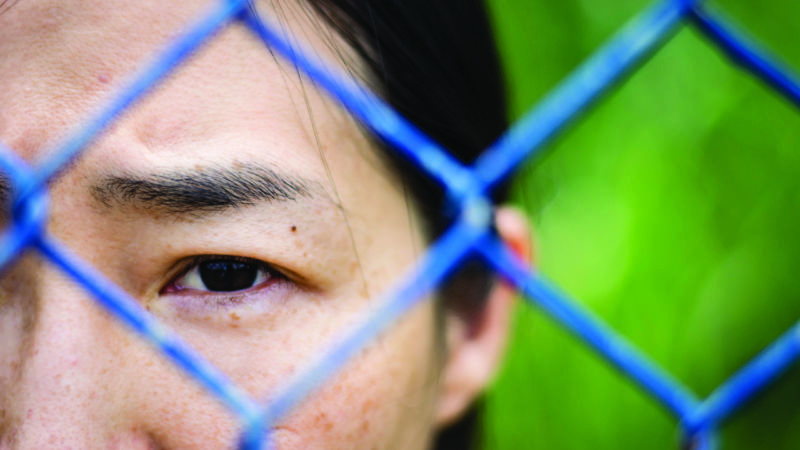In the latest Forum magazine, we see how financial institutions are at the heart of disrupting human trafficking because they are in the unique position of being able to uncover illicit proceeds.
Approximately 40.3 million people live in some form of modern, human slavery. No, this isn’t a statistic from centuries ago or even 100 years ago. This is in 2019. Humans, whether in forced labor bondage, involuntary child labor, or as child soldiers or in sex trafficking and prostitution rings, are being exploited in all parts of the world from factories in Southeast Asia to prostitution rings in the US heartland.
The Financial Action Task Force (FATF), the inter-governmental body responsible for developing global standards and evaluating countries’ compliance around money laundering and terrorist financing, reported that human trafficking proceeds have increased to more than $150 billion in 2018 from $32 billion in 2011, an increase of almost 369%. Victims of sexual exploitation are disproportionately women and girls, according to the United Nations Office on Drugs and Crime.
This is big business with enormous consequences — human lives are at stake. There are global organizations dedicated to stopping human trafficking such as the National Center for Missing & Exploited Children, Polaris, the International Labour Organization, and the Thomson Reuters Foundation. Yet financial institutions, in partnership with law enforcement, are uniquely situated to stop perpetrators of human slavery, namely organized crime, drug cartels and terrorist organizations.
The Role of Financial Institutions
Financial institutions are at the heart of disrupting human trafficking because they are in the unique position of being able to “follow the money” to uncover illicit proceeds, and traffickers need a steady cash flow to be successful.
“Financial institutions play a key role in disrupting human trafficking,” says Jim Dinkins, senior VP and director of operations for Enterprise Financial Crimes Compliance at U.S. Bank. “We have a regulatory mandate to identify and report suspicious activity related to money laundering and terrorist financing,” Dinkins says, but he emphasizes that the moral and humanitarian reasons for identifying and stopping human trafficking may be even more compelling. “We don’t want to be a conduit of any illicit activity for criminal organizations, particularly egregious acts like sex trafficking.”
Steps Financial Institutions Can Take
Dinkins believes the key to identifying human trafficking in financial institutions is a robust training program focusing on awareness at all levels of the organization because, as he put it, you can’t detect what you don’t understand. “Awareness over the last decade has drastically brought insight into human trafficking to financial institutions and the general population, which has resulted in law enforcement generating more and more cases,” Dinkins says.
That means training frontline bank staff to recognize possible indicators of human trafficking. Many times, a female human trafficking victim may come into the bank accompanied by her captor. “I’ve seen examples where a group of three females will come into the bank accompanied by a male who is dominating the conversation. The females use their own information to open the account, but the male is answering all the questions asked by the banking associates,” Dinkins says.
Financial institutions are at the heart of disrupting human trafficking because they are in the unique position of being able to “follow the money” to uncover illicit proceeds…
He also emphasizes the importance of training financial crime investigators to recognize not only money laundering, but money laundering related to human trafficking. Through sophisticated transaction monitoring, those employees can initiate targeted reviews of accounts based on various sources including adverse media and open source information from public data.
It is also important to identify financial products frequently used by traffickers to move funds such as credit cards, wire transfers and ATMs. “You take that transactional footprint and combine it with excessive amounts of other transactions and you may find human trafficking,” Dinkins says. For instance, excessive ride-share transactions along with frequent hotel visits. And when you combine that with a geographical marker such as a sporting event, like the Super Bowl, it increases the likelihood of human trafficking.
Red Flags
According to a recent FATF report, “Financial Flows from Human Trafficking,” there are several red-flag indicators that financial institutions should look for when attempting to identify human trafficking. These include:
-
-
- High-volume deposits through funnel accounts (where funds are deposited in one geography and then withdrawn in another), and immediate withdrawals from border towns
- Ongoing ATM/credit card transactions in even amounts between 10 p.m. and 6 a.m.
- Frequent payments to online escort services for advertising, including small posting fees to companies of online classifieds as well as more expensive, higher-end advertising and website hosting companies
- Sudden activity changes in business accounts outside of the customer’s expected profile
- Use of anonymous monetary instruments to pay bills instead of personal checks
- Structured cash deposits at multiple bank branch locations
-
Having properly trained staff to monitor these transactions can make or break a case. It is really the nuances in understanding that help identify traffickers, according to Dinkins.
Business Models Used by Human Traffickers

David A. Thompson, a specialist leader within the Forensic Investigations and Controversy Practice of Deloitte Advisory, has seen some of the most harrowing examples of human trafficking worldwide. He says there are numerous ways traffickers conduct their trade, including escort services or prostitution rings advertised on the Internet; pornographic videos and still images; in businesses fronting for prostitution such as massage parlors or strip clubs; and some of the worst, family member exploitation. “You are looking at family members, many times in Southeast Asia, who will sell their child into a sex trafficking ring for money.”
When Thompson was overseeing the Homeland Security Investigations attaché offices in Southeast Asia, he employed a collaborative process to combat human trafficking including working with local law enforcement, prosecutors and non-governmental organizations (NGOs). But he cautions it would be incorrect to assume trafficking primarily occurs in Asian countries. “It is really a worldwide problem based on victims often coming from impoverished regions and war zones. We’ve seen equal amounts in the continent of Africa, in the Americas, in central Asia.” He also says that in the US there is an uptick in teenage runaways being exploited. An estimated one out of seven endangered runaways reported to the National Center for Missing & Exploited Children were likely child sex trafficking victims in 2017.
Partnering with Law Enforcement and NGOs
Financial institutions should invest their time in creating partnerships with law enforcement to fight human trafficking through information sharing via lawful mechanisms such as the Bank Secrecy Act. Simply filing a Suspicious Activity Report (SAR) isn’t enough. Establishing a good working relationship is the key.
“At U.S. Bank, not only do we file the SAR, we actually call the respective law enforcement agency to let them know what has been filed and that they may want to take action,” Dinkins says.
The truth is, however, arresting and prosecuting traffickers alone won’t solve the problem. It requires a multi-prong approach from the private sector, public sector, NGOs and governments. “You’re not going to arrest your way out of human trafficking,” says Dinkins. “It is everybody’s responsibility to engage and provide law enforcement the information they need, but also to create the safest and most humane environment in the US, one that we want to live in.”
It is also important to identify financial products frequently used by traffickers to move funds such as credit cards, wire transfers and ATMs.
Thompson agrees, adding that it is important for the private sector to work with NGOs to help them thrive and continue to build awareness campaigns, and most importantly, continue to partner with law enforcement.
“It has to be a priority for financial institutions to pick up the phone and call law enforcement after filing an SAR,” Thompson says. “If they do that, there will be a lot more victims saved, and more traffickers brought to justice.”






